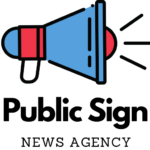For networking professionals in their early careers, Cisco provides a technical certification called Cisco Certified Network Associate (CCNA). It addresses the following subjects:
basics of networks
network availability
Internet Protocol (IP) connection
IP-based services
Basics of security
Programmability and automation
Read More: CCNA training
On February 24, 2020, Cisco announced a number of substantial modifications to its test format, with an emphasis on flexibility and simplification. It also made an effort to better match the test to the demands of the contemporary industry. Cisco used to provide a number of CCNAs for various networking specializations. The most recent version combined all options into a single CCNA certification, which serves as the starting point for all professional routes involving Cisco.
The Cisco certification hierarchy
There is just one certification type available from Cisco, the Cisco Certified Technician, and it is offered in three different technological tracks: Data Center, Routing and Switching, and Collaboration. It is not a requirement for the CCNA or other higher-level certificates, and it is intended for tech support positions.
The certification hierarchy of Cisco consists of four levels:
A person at this level is one who has worked in a field for a year or two, contributing to a team but not taking the lead.
Professionals in information technology (IT) with this degree of expertise typically hold leadership or senior team positions.
At this point, a person has gained experience in the networking industry and honed their specific talents over a number of years.
This certification level, which focuses on end-to-end IT abilities from planning and developing to managing and optimizing network systems, recognizes an even greater degree of experience.
Three distinct areas of expertise—Engineering, Software, and CyberOps—are covered in exams offered at all four levels.
Before Cisco changed its certification scheme in 2020, passing the CCNA test was a requirement for passing all other examinations, including the Cisco Certified Network Professional and Cisco Certified Internetwork Expert. That’s not the situation anymore. There are no longer any requirements, so anyone can take tests whenever they feel prepared. However, Cisco does offer suggestions regarding the degree of proficiency required to pass particular tests.
The CCNA certification is still a fundamental one that leads to other qualifications. Regardless of the recipient’s future concentration, having this credential is beneficial.
What advantages come with holding a CCNA certification?
The following are the primary advantages of passing the CCNA exam:
Understanding. Those who pass the test demonstrate that they grasp the fundamentals of managing a network.
abilities. After passing the CCNA test, a candidate has extensive experience with a variety of jobs and abilities.
Authenticity. Potential employers may see that a candidate has validation from Cisco and is knowledgeable about a wide range of Cisco networking products when they see the CCNA certification on a resume.
updating one’s abilities. Even seasoned IT workers might benefit from taking and passing the CCNA since it keeps them informed about advancements in networking.
Remit payment. A new IT certification typically results in a pay boost of around $13,000, according to Global Knowledge’s “2020 IT Skills and Salary Report.”
Flexibility. According to U.S. Bureau of Labor Statistics projections, there is a growing need for IT workers. Because it may be used to a variety of IT employment pathways, this makes the CCNA certification useful to get.
What qualifications are needed to become a certified CCNA?
As per Cisco, there are no official requirements to take the CCNA test. Cisco advises CCNA applicants to possess the following, though:
use Cisco networking gear for at least a year;
fundamental understanding of IP addressing; and
a strong foundation in networking principles.
The CCNA and other examinations were revised in 2020 as part of improvements to Cisco’s certification program to better reflect the typical career path of a networking expert. When candidates believe they are ready, they can sit for a test.
How do you become ready to become a certified CCNA?
Candidates for certification can use a variety of online courses, free practice exams, and books to be ready for the CCNA exam.
Cisco provides a training program. Students may practice utilizing Cisco networking technologies in lab environments and get expertise with the abilities necessary to pass the test by enrolling in the “Implementing and Administering Cisco Solutions (CCNA) v1.0” course.
Through its Learning Network, Cisco provides more materials as well, such as the following:
access to an expert community;
practice tests and examinations; and
bundles for guided group study and independent study.
How can one obtain CCNA certification?
To get certified, CCNA candidates need to pass the Cisco 200-301 CCNA test. Networking essentials, including the newest technologies, software development abilities, and professional duties, are covered in the exam. If one passes it, it indicates that one is familiar with the fundamentals of managing a network.
Exams are administered by Cisco using the Pearson VUE platform. Applicants for the test should do the following four steps:
Benefit from the study guides and test-prep courses offered by Cisco and other businesses.
Visit the Pearson VUE website to log in.
Select a time and place to register for the Cisco 200-301 test.
Take the test online or at a Pearson VUE testing facility.
At the testing facility, test takers find out if they passed the exam. They can get certified as CCNAs if they pass the exam.
How does one renew their certification as a CCNA?
Every three years, those with a Cisco certification need to recertify by passing the test or fulfilling continuing education requirements.
Upon passing the aforementioned “Implementing and Administrating Cisco Solutions (CCNA) v1.0” course, students receive 30 continuing education credits and receive CCNA recertification.
